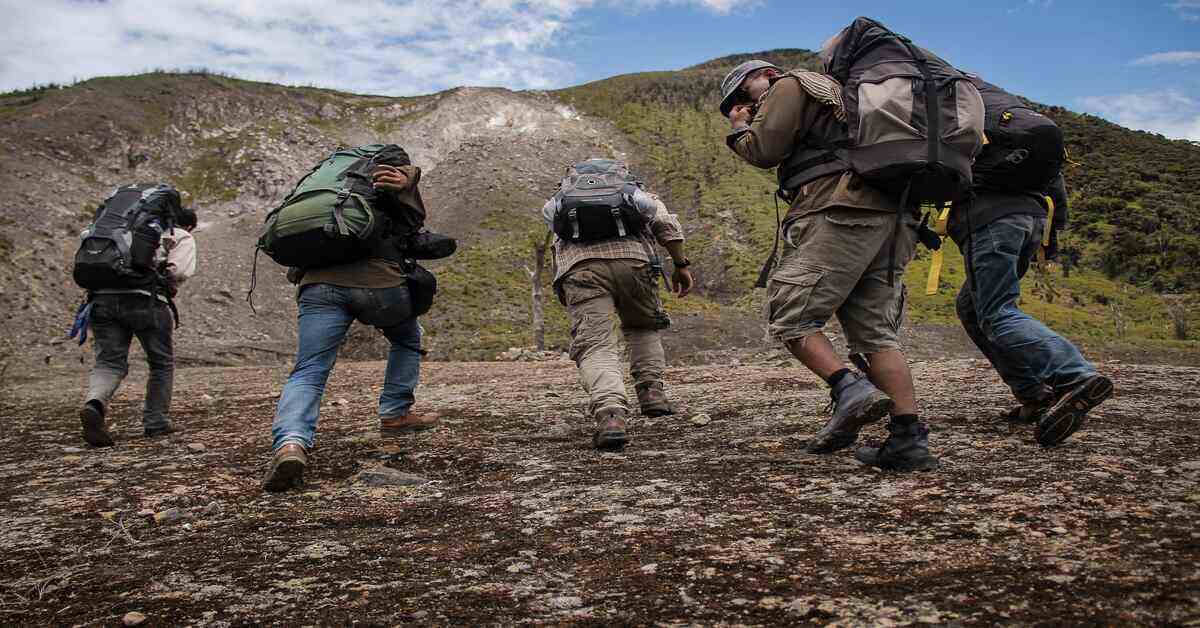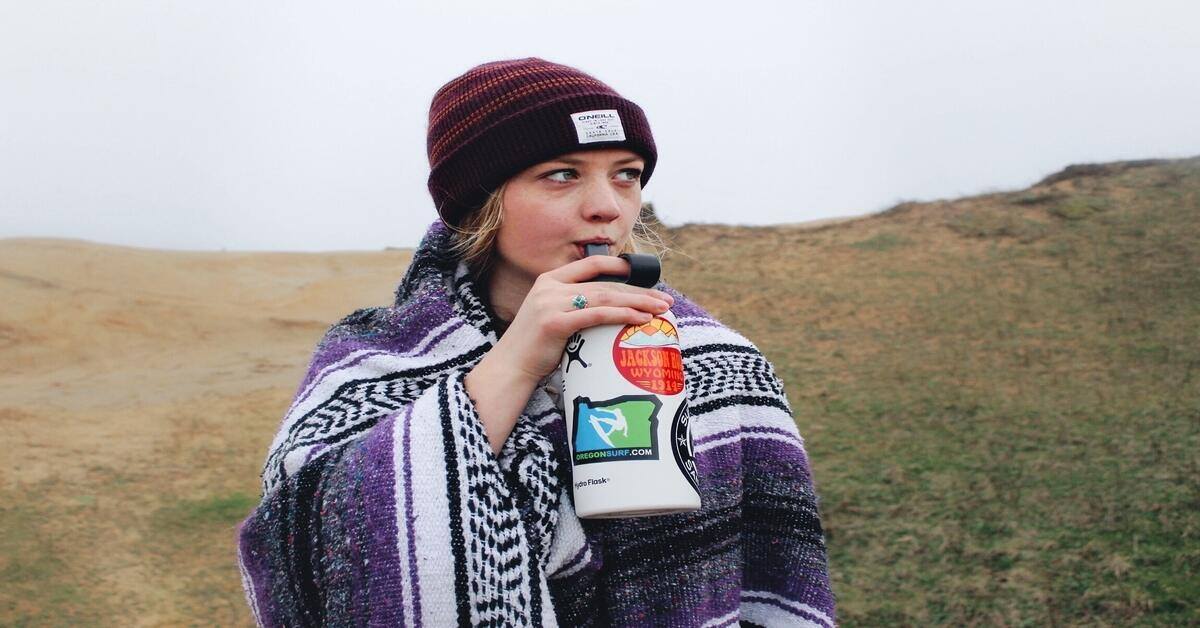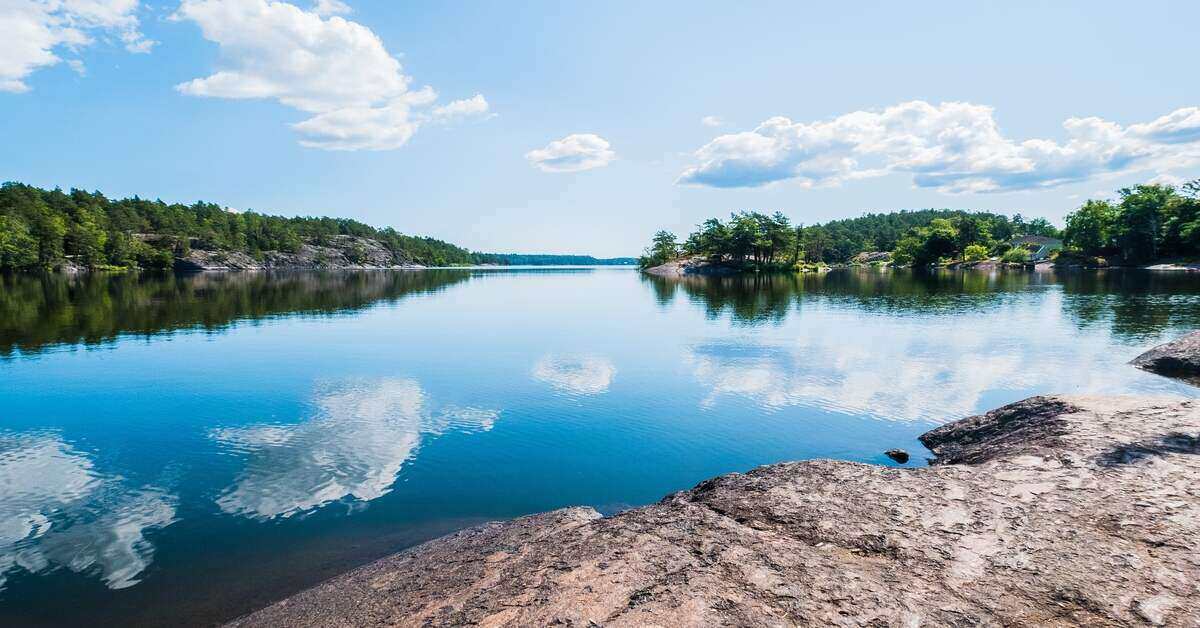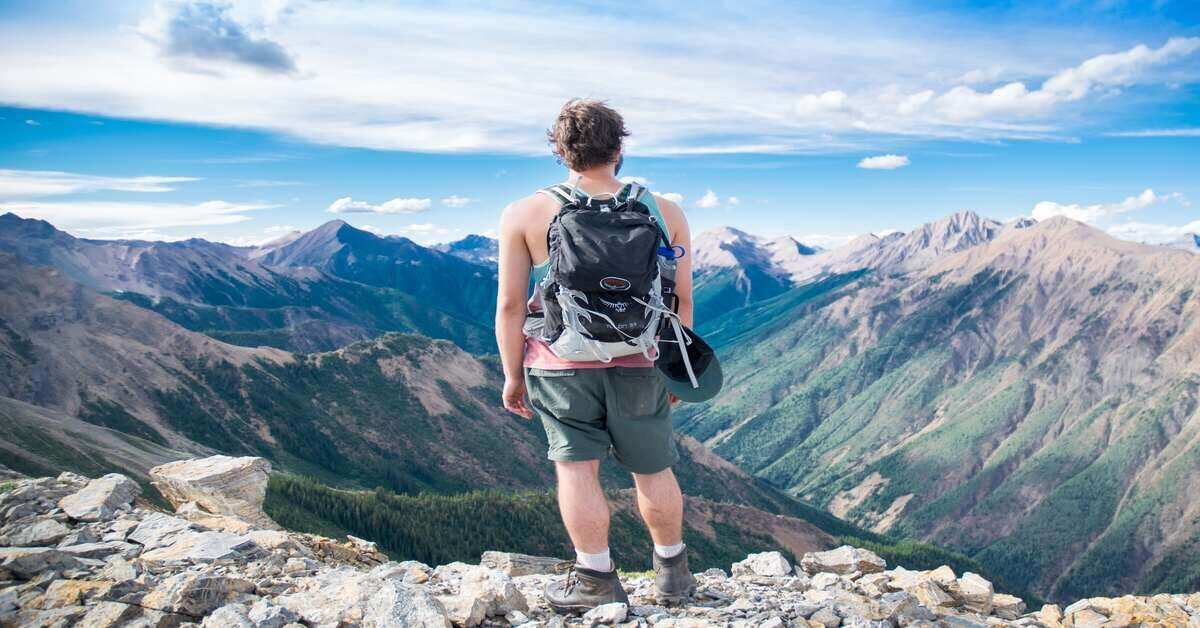Most people have their holidays in the summer and always look forward to it every year. During this time of the year, some popular outdoor activities include hiking, fishing, going to the beach, camping, and biking. At the beach, your wear minimal clothing and enjoy both the sunshine and the water. It’s an entirely different thing hiking in the backcountry with the sun’s heat unleashing its wrath on you. This piece will answer a question many hikers have: what to wear hiking in summer.
Hiking allows you to get away from home and enjoy the fresh air outside while also exercising. Since it’s not something you do every day, you have to make sure you enjoy it to the fullest. And having the right clothing on is one way to achieve this.
LEGAL DISCLAIMER: This post may contain affiliate links. If you click an affiliate link and make a purchase, I may earn a commission. Also, as an Amazon Associate, I earn from qualifying purchases.
Before we talk about what to wear hiking in the summer, we will discuss some preparation and health tips.
Getting Ready To Hike in Warm Weather
Hikers ensure they have all the necessary clothing and gear for hiking in winter. But when planning a hike during the summer, they usually don’t take a lot of time to prepare. Here are some preparation tips that can make your hike more enjoyable.
- Hike in a place with water bodies – this is a no-brainer. Choose a trail that has water bodies such as streams, rivers, and lakes. As you walk, the lake or sea breeze will reduce the sun’s impact. You also take a dip for a few minutes to cool your body and rest before you get back on the trail. One hack I find helpful is to dip your hat in the water and wear it as you walk. It will keep your head and neck cool and will probably be dry after an hour or two.
- Walk under the shade – look for a trail with many trees or boulders/gorges that block out the sun’s rays. This way, you can walk in the shade for long periods.

- Pick the ideal time to hike – you need to be keen about the time you decided to go hiking in hot weather. The hottest times of the day are 12 noon to 3 pm. You can start your hike in the morning and end it before noon. Or you can begin at around 3 pm and complete it in the evening. If you are hiking the whole day, you can spend the hottest part of it near a water body such as a lake or river resting and cooling off.
- Get used to the weather – you may have noticed that it takes a few days for your body to adjust to new weather. Go on a couple of shorter hikes during summer to prepare your body sufficiently for longer walks.
- Consider hiking at night – It is a fact that some people struggle hiking under the scorching sun. The best solution is to hike t night when temperatures are low. Keep in mind that summer nights can be quite chilly, so have a lightweight jacket and pants with you.
Related: Best Gifts for Outdoor Enthusiasts
When hiking in warm weather, you risk suffering from the following conditions:
Dehydration
This is one of the main issues hikers have to deal with. Dehydration makes you feel exhausted and takes the joy out of hiking. Therefore, carry enough water with you to last the entire hike.
Experts recommend drinking about half a liter of water every hour. If you are on rugged terrain, you can increase the amount to one liter. However, this does not apply to everyone; factors that can influence the amount of water you take on a hike include a terrain’s difficulty, age, sweat rate, and body type.

Remember to carry a water filter in case you run out of water on the trail. This device allows you to purify water from water bodies such as streams, lakes, and rivers. And if you’re bringing your canine friend along, understand that they will need water too.
Heat Exhaustion
Heat exhaustion is caused by your body’s inability to handle the extreme heat after being outdoors for several hours. Some symptoms of this condition include nausea, headache, sweating, tiredness, dizziness, and rapid heart rate. If you are hiking in a group, look out for these symptoms in other hikers.
To treat it, you can rest under a shade and remove any excessive clothing on your body, and drink water. If you are near a water body, dip a piece of cloth in the water and put it on your head. You can also splash some water on your head.
Sunburn
Sunburn is caused by too much exposure to the sun. Parts of your skin become itchy, red, and painful to touch. It may lead to other conditions such as dark spots, skin cancer, and wrinkles. Wearing sunscreen is one of the most effective ways of preventing sunburn. Wear sunscreen a quarter an hour before starting your hike and every 1-2 hours during the trek. Putting on clothes that cover the exposed areas of your skin is another great way of preventing sunburn.
Heat Stroke
Heat stroke or sun stroke is worse than heat exhaustion. It’s where your body overheats, and it becomes almost impossible to continue walking. Some signs and symptoms of heat stroke include nausea and vomiting, confusion, a temperature of more than 39 °C/103 °F (if you can measure it), headache, and anxiety. If you notice such symptoms, you will know it’s a heat stroke, and you need to handle it immediately.
First, give the victim some water to drink if they are in a position to do so. Secondly, try to cool down the person by laying them down in the shade and removing any extra garments from their bodies. Thirdly, fan them using a piece of cloth or splash water on them to reduce their body temperature. And if you are near a water body, you can dip the victim in water (ensure you keep the water away from their airway).

Remember, this condition can be dangerous, so you need to seek medical attention in the quickest time possible.
Heat Cramps
Heat cramps are painful muscle contractions that mostly happen when a hiker is on rugged terrain. Overexertion is said to cause it. So, take a rest if you feel like you feel fatigued. Having enough water can prevent this condition (this is advice from experts – the exact cause of heat cramps is unknown). Also, you can do some stretching to reduce the pain.
Overhydration
Drinking too much water leads to a condition known as hyponatremia or overhydration. The body accumulates too much water diluting the amount of sodium in the blood. Thus, the levels of sodium in the bloodstream become low. This condition is uncommon and usually affects triathletes and marathon runners.
Some of its symptoms are tiredness, nausea, headache, and confusion. Avoid drinking too much water to avoid this. You can also increase salt levels in your body by carrying salt tablets or salty snacks. In addition, you can opt for electrolyte-infused water instead of plain water.
What to Wear Hiking in Summer
Wearing the right clothing can prevent or reduce these conditions. Let’s now take a look at what to wear when hiking in warm weather. Here’s what I recommend:
Best Shirts for Hiking in Warm Weather
When picking a suitable t-shirt for the hike, it doesn’t matter if it is fancy/expensive, or inexpensive. Please make sure that the material is nylon, wool, or polyester. The type you choose also depends on your preference.
I recommend going with something simple. Note that button-up shirts that have collars are good for reducing the sun’s heat on your neck. If you don’t want to expose your arms to the sun, go with long-sleeved shirts. Check out Willit Sun Protection Hoodie Long-sleeved Shirt on Amazon.
Shorts and Pants
Shorts are perfect for hot weather hiking. You can choose trail shorts that come with zipper pockets or athletic/running shorts. Select the best types from your favorite brands. Remember, non-branded shorts are also awesome.
But there’s one major problem with shorts – they leave your legs exposed to the sun’s heat. Aside from that, they won’ protect your legs from things like the spiky undergrowth, mosquitoes, leeches, and sharp rocks.

For this reason, many hikers prefer trekking with pants, even during the summer. Some people like hiking in their workout tights (yoga tights) as they are simple and comfortable. The only issue with yoga pants is that mosquitoes can bite through them, and they won’t protect you against sharp objects on the trail. Get good pants made of tough material, so it doesn’t wear out quickly.
Related: Hiking While Pregnant Tips
Unlike shorts, pants will cancel the sun’s effects on your legs, keep bugs away, and prevent injuries that rough rocks and sharp branches can cause. You can spray the pants with Permethrin for extra protection against insects. Apart from that, they come in handy when temperatures go down in the evening.
You can wear either shorts or pants. Just remember that each has its advantages and disadvantages. Check the state of the trail to see which would be the best. I suggest having both in your backpack so you can change any time you need to.
Hiking Shoes/Boots
You can hike in your trail running shoes during the summer if the trail is short and with few obstacles. But if the trail has lots of rocks, water bodies, and undergrowth, it would be best to wear trekking boots. This is because they are made of more durable material, are more comfortable, and have good traction to provide balance.

Hiking Socks
For socks, give cotton a wide berth and go with either wool or synthetic to wick away moisture and keep your feet dry. Ensure that you get the right size. If you’re wearing regular hiking shoes, you can pick short socks. Long socks are more suitable if you have hiking boots. Check price of DANISH ENDURANCE Merino Wool socks on Amazon.
Things to Consider When Purchasing Clothes for Warm Weather Hiking
- Ensure the clothes are UPF-rated. This way, you will be hiking in clothing that is designed to protect you from ultra-violet radiation. These clothes usually contain ratings such as UPF 30 and UPF 15.
- Avoid cotton. Cotton absorbs moisture as you sweat and takes a long time to dry. When it is hot, you may feel okay with this type of material, but what happens when the temperature goes down in the evening? Experienced hikers prefer synthetic, nylon, or wool because they get the sweat out of your body and allow it to evaporate at a faster rate. Also, ensure that the clothes you choose are loose-fitting and lightweight.
- Choose light colors because they reflect sunlight and keep you cool. Dark colors such as black absorb heat and increase the heat on your body. I’d go with colors such as khaki, tan, and white.
- Ensure the clothes are lightweight. If you want to protect your skin, you will need clothes like pants and long-sleeved shirts that cover the exposed areas of your body. And since you will be layering, you’d want to look for lightweight pieces.
Other Items to Wear/Carry on a Summer Hike
Polarized sunglasses
At times the glare of sunlight can be tough on the eyes, especially if the sun is in front of you. Poor visibility can cause falls which may lead to serious injuries. Wearing polarized sunglasses will help you see better on the trail. These glasses are lightweight and durable, making them perfect for long hikes on rugged terrains.

Bandana
When it gets too hot, you can dip the sun bandana in water and wear it around your neck or put it over your head to cool your head and neck. A small piece of cloth, a scarf, or a neck gaiter can serve the same function. You can also bring along a squirt bottle for cooling purposes.
Hat
Another great way to protect your head and neck from the scorching heat is to wear a hiking hat. A baseball cap is fine, but it might not be the best for warm weather hiking. The best is a sun hat with a wide brim.

Rain Gear
The weather is usually unpredictable, so don’t assume it will be sunny throughout your hike. So, ensure you carry your rain gear to ensure you are protected if there is a downpour. A waterproof, lightweight, and breathable rain jacket will prevent hypothermia in case it rains. Ensure that the jacket you purchase has all these features. Note that a rain jacket can also shield your body from strong winds. Bringing rain pants with the same features as the jacket is also advisable.
A Lightweight Camp Chair
Hiking in warm weather means you will take rests a couple of times. You can carry a lightweight camp chair for these rests. A hammock is also a great alternative if you prefer to lying to sitting.
I hope you now have an idea about what to wear hiking in summer. With suitable clothing and gear, you can prevent the sun’s heat from ruining your hiking experience. Have you been hiking in warm weather? Let us know about some clothing tips in the comments section.

